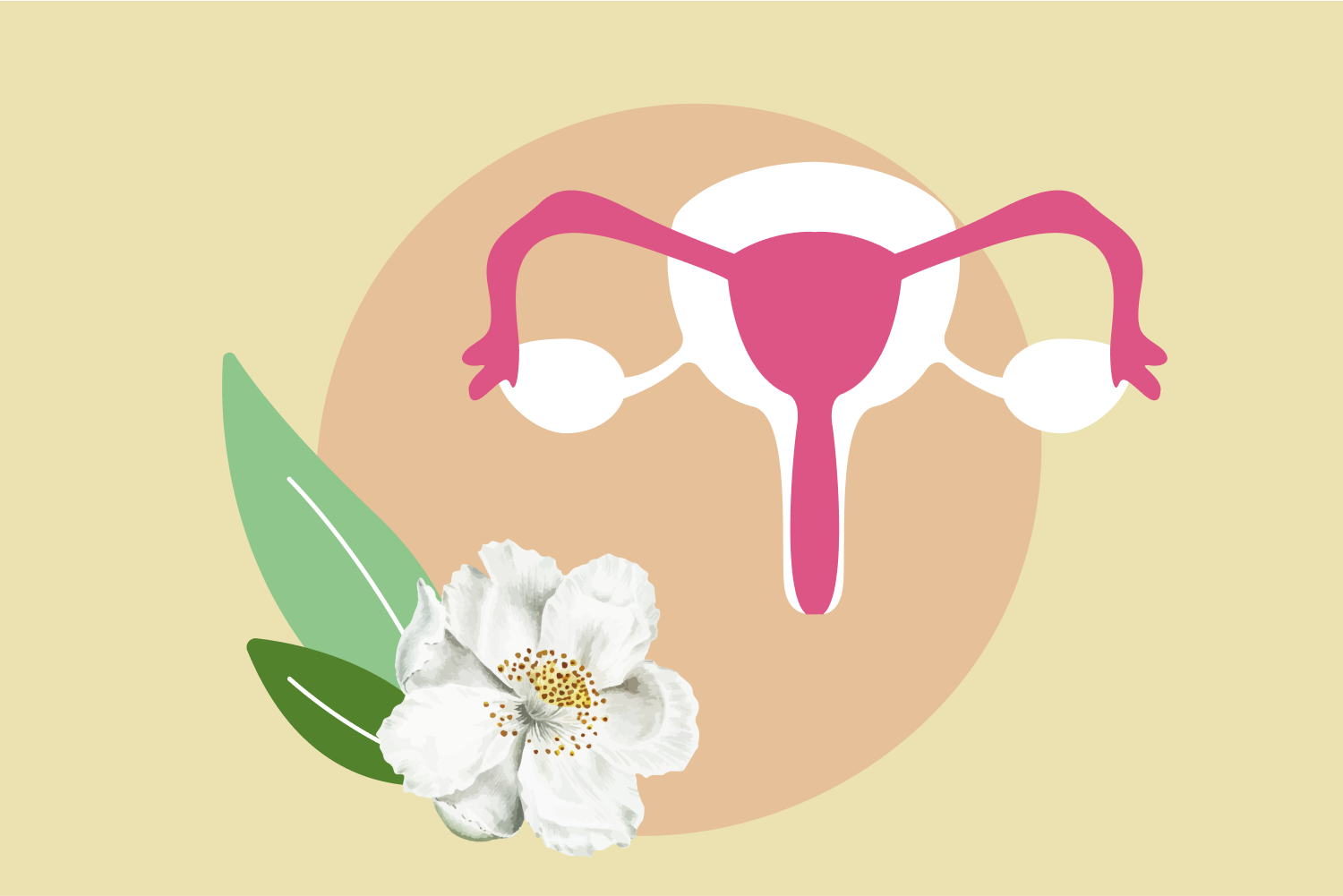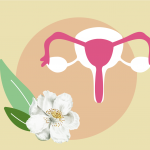Do Ovarian Cysts Cause Infertility? How They Impact Pregnancy & TTC
So you’re sitting in the doctor’s office and you hear the words “ovarian cyst”.

Before jumping to the conclusion that something might be wrong, take a moment to breathe, consider their role in the reproductive process, and reassure yourself with the fact that ovarian cysts are often found in nearly every premenopausal woman.
There are rare cases, however, where ovarian cysts might be cause for concern. That’s why it’s important to not only attend regular checkups with your OBGYN, but to also understand the signs and symptoms of when an ovarian cyst could be serious.
Here’s a look at the different types of ovarian cysts you need to be aware of, what causes them, and the potential warning signs for when they might have a negative impact on your fertility.
Can ovarian cysts affect fertility?
The honest answer to questions like “do ovarian cysts affect fertility?” or “can you get pregnant with ovarian cysts” is simply “it depends”.
The majority of the time, ovarian cysts are completely harmless and pain-free. You might even be surprised to learn that most women of reproductive age have one each month but they don’t even feel it!
However, while there are some types of ovarian cysts that occur naturally during the female reproductive cycle, there are other types of cysts that are potentially harmful. For example, cysts that are cancerous or those caused by an underlying condition such as endometriosis or polycystic ovary syndrome (PCOS).
What are ovarian cysts?
Even if you’ve heard of the term “ovarian cyst” before, you still might be fuzzy on the details. To put it simply, ovarian cysts are fluid-filled sacs or ‘pockets’ that can either develop inside or on the surface of an ovary. They can occur in both ovaries simultaneously, or, they can affect only one ovary at a time.
Because the ovaries are responsible for releasing estrogen, progesterone, and the egg necessary for getting pregnant, it can be quite concerning for women in their child-bearing years to discover that they have a cyst on one or both of their ovaries.
However, ovarian cysts are completely normal and develop naturally in most women, with the majority of cysts disappearing on their own without the need for treatment. Known as “functional” cysts, these cysts appear in healthy ovaries and are considered a normal part of ovarian function.
However, that doesn’t mean that all ovarian cysts are totally harmless. Although less common than functional cysts, “non-functional” cysts can also form and if large or cancerous, should be removed.
Other types of cysts to be concerned about include cysts formed as a result of polycystic ovary syndrome (PCOS) or endometriosis. While the cysts themselves may not be dangerous, they could be indicators of something more serious and harmful for fertility.
Causes
There are a number of different causes and reasons why ovarian cysts develop. According to the U.S. Department of Health & Human Services, hormonal fluctuations, endometriosis, pregnancy, and pelvic infections are the most common reasons why a cyst may develop on the ovaries.
While cysts forming due to endometriosis or an infection might be a cause for concern, other ovarian cysts that form in the early stages of pregnancy can actually be helpful in supporting the pregnancy until the placenta is formed. Additionally, cysts that form as a result of natural hormonal fluctuations throughout the menstrual cycle should not raise concern as these cysts will typically resolve themselves on their own within 1-3 months.
Symptoms
In most cases, women with ovarian cysts experience little to no discomfort and can carry on with their daily lives without interruption.
However, women with cysts that are cancerous or large in size can experience noticeable and even more serious symptoms. A few of the most common symptoms include:
- Bloating and swelling
- Lower abdomen pain and pressure
Other symptoms that are less common include:
- General pelvic pain
- Pain during intercourse
- The urge to urinate frequently
- Irregular vaginal bleeding
- Aches and pain in the lower back or thighs
In severe cases where a cyst has ruptured or caused an ovary to twist, it is common to experience sharp, sudden, and severe pain accompanied by fever, nausea, and vomiting.
Even though the symptoms can vary depending on the individual, women with cysts related to endometriosis are most likely to experience the following symptoms:
- Painful menstrual cramps in the lower back or abdomen
- Unusually heavy menstrual flow
- Pain during intercourse
- Painful urination or bowel movements
Those with polycystic ovary syndrome (PCOS) resulting in lots of small, unruptured follicles or cysts on the ovaries may also experience the following symptoms:
- Missed or irregular periods
- Increased growth of body hair
- Problems with acne
- Weight gain
If you have experienced any of the above symptoms, it might be a good time to check in with your doctor to determine a diagnosis and appropriate next steps.
Types of ovarian cysts
Follicular cysts
During the menstrual cycle, an egg develops inside of a follicle on the ovary. Follicular cysts can sometimes occur if after ovulation, the egg is not released and the follicle instead holds fluid – forming a cyst.
Follicular cysts are considered “functional” and can typically resolve on their own – unless they become too large. If that is the case, they may start to cause pain or even interrupt the menstrual cycle.
Corpus luteum cysts
A corpus luteum cyst is another “functional” cyst that can sometimes appear after the release of an egg from the ovary. This type of cyst is extremely common within the first trimester of pregnancy, and will typically resolve by the end of the second trimester.
Complications can arise from corpus luteum cysts in the event that it grows too large, ruptures, becomes infected, or twists.
Cystadenomas
Cystadenomas are considered “non-functional” cysts and occur on the outside of the ovary. There are four different types of cystadenomas including serous cystadenomas, mucinous cystadenomas, endometrioid cystadenomas, and seromucinous cystadenomas. Some cystadenomas are filled with a watery fluid while others can be filled with mucus.
These types of cysts are usually benign, though they can grow to be large due to the fact that they develop outside of the ovary. Even though they are not usually cancerous, they still typically need to be removed surgically if they grow to be large or painful.
Dermoid cysts
Dermoid cysts are another type of “non-functional cyst” that can sometimes develop from the same cells that make the eggs in the ovaries. Typically, these cysts are filled with skin, hair, muscle, and urinary tissue.
The major risk factor with dermoid cysts is that they can become infected or even rupture. Although dermoid cysts are usually benign, in rare cases they can become cancerous and should be removed via surgery or laparoscopy.
Which ovarian cysts can impact fertility?
For women trying to conceive, it’s perfectly understandable to want to ask questions like “can ovarian cysts cause infertility” or “do ovarian cysts affect fertility”. And while most ovarian cysts do not pose a threat to fertility, there are a few cases where the presence of cysts may be concerning. This includes cases where a woman develops cysts caused by endometriosis and cysts that occur as a result of polycystic ovary syndrome (PCOS).
Endometriosis affects an estimated 11% of women and is a condition where tissue similar to uterine lining (endometrium) grows outside of the uterus, ovaries, and fallopian tubes. In some cases, the tissue can grow into areas outside of the reproductive system including the bladder, bowels, rectum, lung, brain, and even skin. Women with more serious cases of endometriosis can sometimes develop cysts filled with endometrial fluid inside of the ovary, known as an “endometrioma”.
While it is possible to still get pregnant, an estimated 30-50% of women with endometriosis may struggle to become pregnant, with the presence of cysts being an indicator of a more severe stage of endometriosis. Endometriosis is considered one of the top three causes of infertility in women, so it’s important to take any symptoms of endometriosis seriously.
Polycystic ovary syndrome (PCOS) is another condition where the presence of cysts may signal problems with fertility. Women with PCOS may develop several small fluid-filled cysts on the ovaries. Other symptoms of PCOS include irregular periods (and ovulation) along with hormonal imbalances resulting in fertility challenges.
Aside from cysts related to endometriosis and polycystic ovary syndrome (PCOS), other ovarian cysts do not typically affect fertility. This includes follicular cysts, corpus luteum cysts, dermoid cysts, and cystadenomas.
What are your chances of getting pregnant with ovarian cysts?
If you have a functional ovarian cyst, cystadenoma, or dermoid cyst, your fertility and chances of getting pregnant are usually unaffected. That means if you are having regular unprotected sex, you have a 92% chance of becoming pregnant in one year (if you are aged 19-26) and an estimated 82% chance of becoming pregnant in one year if you are aged 35-39.
If your ovarian cysts have developed due to complications related to endometriosis or polycystic ovary syndrome (PCOS), your chances of becoming pregnant might be affected.
In mild to moderate cases of endometriosis, an estimated 70% of women will conceive without the need for treatment. Those with severe cases of endometriosis however may experience infertility or require treatment from a fertility expert.
The statistics for those with polycystic ovary syndrome (PCOS) are not as straightforward due to variations in cases and treatments. Some doctors suggest that those with PCOS will not have any difficulties conceiving, however, help from fertility treatments might be necessary.
If you are struggling to become pregnant and you think it might be due to complications from a cyst, the best thing to do is make an appointment with your doctor. He or she can perform a pelvic examination to determine what might be going on and offer you some advice for further tests or treatments.
Mira’s Editorial Process
All content produced by Mira meets stringent editorial standards, ensuring excellence and accuracy in language and medical precision. Every piece undergoes thorough fact-checking and review by qualified professionals. Check out our full editorial process to learn more.










